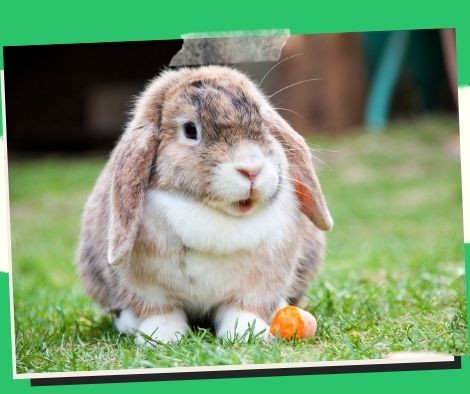
Rabbits and Rabbit Shows: Common Terminology
A male rabbit is known as a buck.
A female rabbit is known as a doe.
A rabbit under the age of six months is referred to as a junior.
A rabbit above the age of six months is considered a senior.
A rabbit between the ages of 6 and 8 months is known as an intermediate or 6/8. Larger breeds are the most prevalent.
Varieties – A rabbit’s color
The rabbit’s age group is designated by the term “class.” Whether you’re a Junior, Intermediate, or Senior, we’ve got you covered.
Broken — A color that goes well with white. On the body, there is either a blanket or a spotty pattern of the hue.
Solid – A rabbit’s entire body is covered in a solid color.
Agouti is a hue with bands and ticking on it. Chestnut and Chinchilla are the most frequent colors.
Shaded — Colors like Sable Point are shaded. On the nose, ears, and other regions of the body, these colors are darker. While the entire body is a single lighter color.
A molt is a shedding and out-of-condition coat.
Finish – A rabbit’s coat can make the difference between winning and losing if it is either lacking in the finish (bad condition, molting, etc.) or has a nice finish (well-groomed, not molting).
A pedigree is a piece of paper that shows three generations of rabbits and their ancestors.
Registration – A piece of paper that also shows three generations of rabbits and their ancestors. This paper, on the other hand, declares that it is free of disqualifications and has been deemed an acceptable representative of the breed (for the rabbit it is granted to). The rabbit is also given a registration number that is unique to it.
Ear Number/Tattoo – A tattoo of numbers and/or letters on the rabbit’s left ear. There are usually no more than 5 in the ear. If the rabbit has been registered, a circled R can be tattooed in the left ear.
Leg — A leg is obtained by placing first in an ARBA-sanctioned show with three exhibitors and five rabbits in the competition. A leg, for example, would be awarded for first place in a class of five or more rabbits entered by three or more separate exhibitors. It may be possible to earn a leg in a class with insufficient exhibitors and/or bunnies by winning BOSV (if there are sufficient numbers of the related sex in the variety), BOV (if there are sufficient numbers in the entire variety), BOS (if there are sufficient numbers in the related sex of the breed), or BOB (if there are sufficient numbers in the related sex of the breed) (if there are sufficient numbers in the entire breed). Each judgment allows a rabbit to acquire only one leg.
BOB stands for Best of Breed.
BOS stands for Best Opposite Sex of Breed, which means that if the BOB rabbit is a buck, the BOS winner must be a doe. It’s named Opposite Sex for a reason.
BOV stands for Best of Variety.
BOSV stands for Best Opposite Sex of Variety, which means that if the BOV rabbit is a buck, the BOSV winner must be a doe. It’s named Opposite Sex for a reason.
The BOV and BOSV champions advance to the BOB and BOS competitions.
BIS stands for Best in Show. (This is significant.) Your bunny must receive BOB in order to win. All of the breeds with a BOB winner compete at the end of the show to see who is the best of the best.)
1st Runner Up / Reserve for BIS – This is the rabbit who came in second place after winning BIS.
2nd Runner Up — This is the rabbit who came in third place in the BIS competition.
DQ stands for disqualification. Many factors can cause a rabbit to be rejected. The most prevalent reasons are being overweight, having terrible teeth, or having a sickness.
Flesh condition – It’s exactly what it sounds like. The skin above the backbone of a rabbit that is “rough” in meat is particularly loose and thin. Bones are plainly discernible. Most common among sick rabbits, are rabbits who aren’t getting enough food, and does who have just weaned their litters.
An all-“adult show” is usually referred to as “open.” This means that anyone of any age is able to compete, however most of the time it is adults competing against other adults. If there are numerous shows, they will normally append the letters A, B, and C to the end of “Open Show.”
Youth — This is an all-youth show. These shows are only open to anyone who are 18 years old or younger. Breeders under the age of 18 must bring their own rabbits to the judging table.
Cull – When a breeder goes through a litter, he or she chooses which animals to keep. The remaining animals are sold (or eaten if they are meat breeds.)
Kindling – A term that refers to the process of giving birth to newborn rabbits.
Baby rabbits are referred to as kits.
These are not rabbits. Cavy / Cavies – They are occasionally displayed in rabbit shows. They essentially serve as guinea pigs.
Save/Share this story with QR CODE
Disclaimer
This article is for informational purposes only and does not constitute endorsement of any specific technologies or methodologies and financial advice or endorsement of any specific products or services.
 Need to get in touch?
Need to get in touch?

We appreciate your reading. 
1.) 

Your DONATION will be used to fund and maintain NEXTGENDAY.com
Subscribers in the Philippines can make donations to mobile number 0917 906 3081, thru GCash.
3.) 
4.) 
AFFILIATE PARTNERS

World Class Nutritional Supplements - Buy Highest Quality Products, Purest Most Healthy Ingredients, Direct to your Door! Up to 90% OFF.
Join LiveGood Today - A company created to satisfy the world's most demanding leaders and entrepreneurs, with the best compensation plan today.

 Business, Finance & Technology
Business, Finance & Technology





